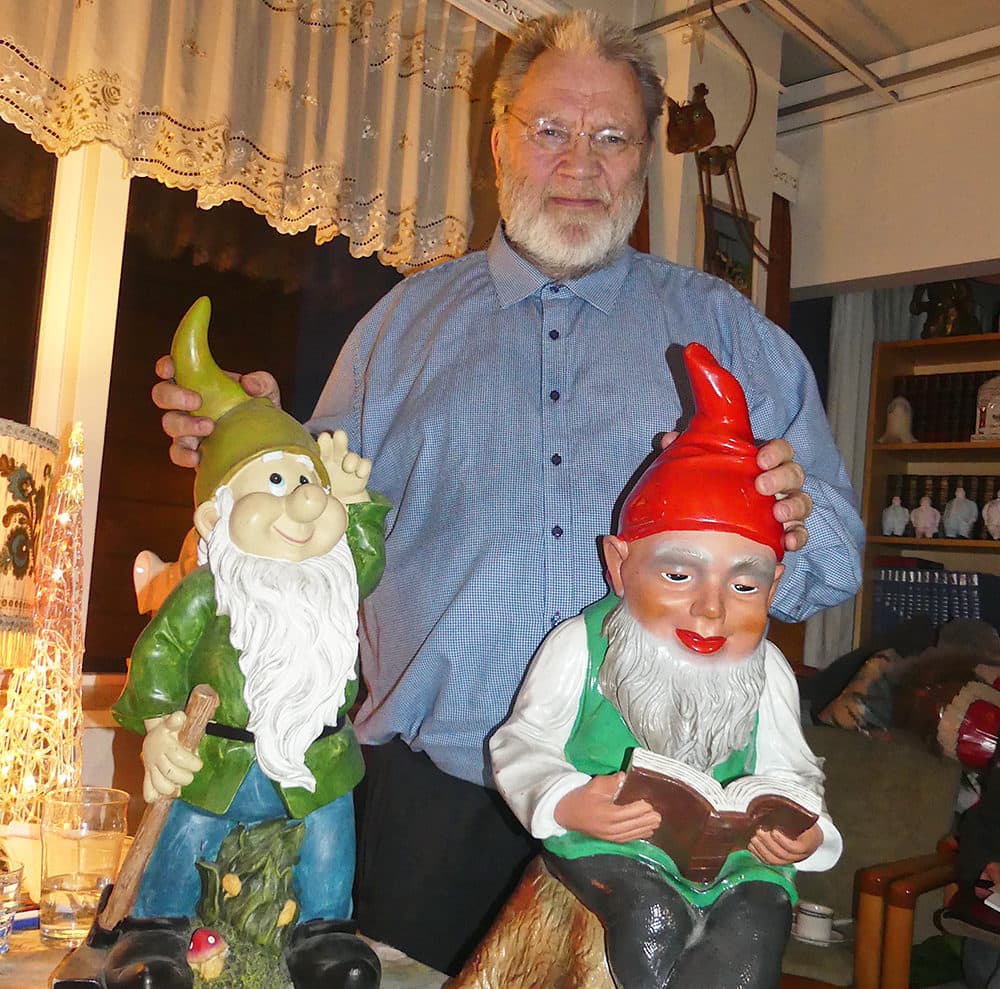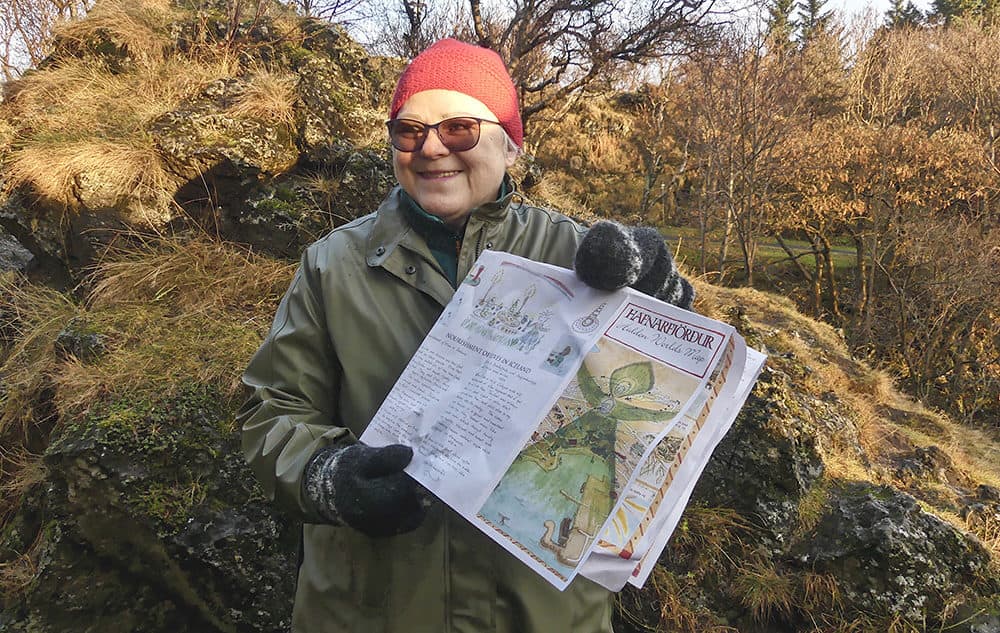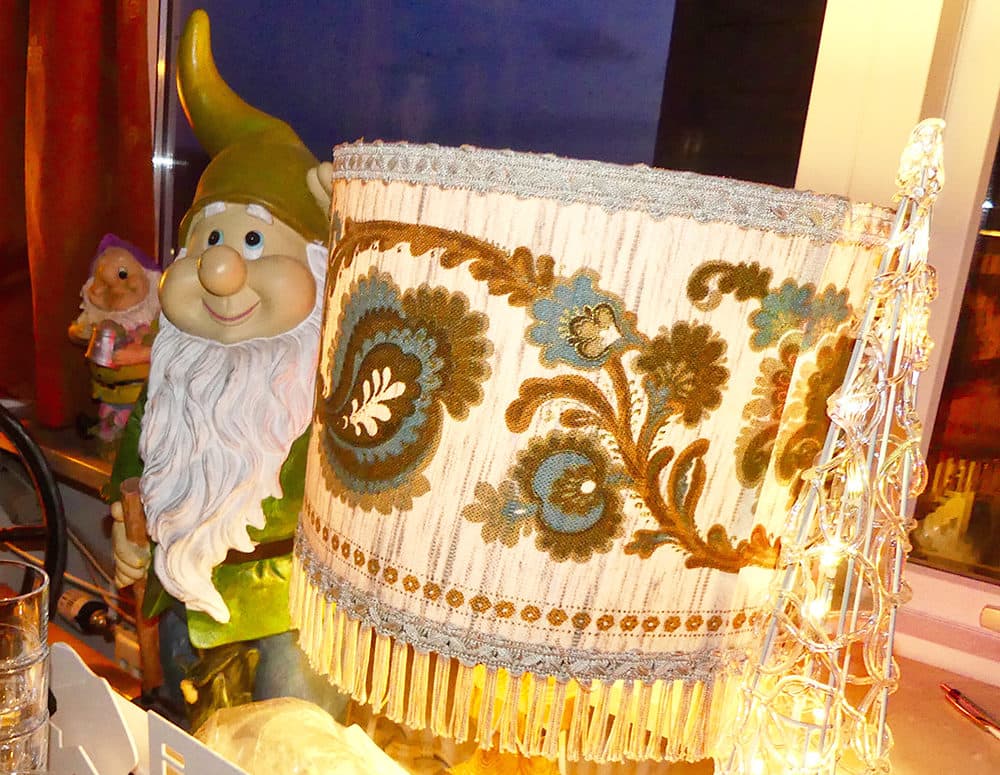Advertisement
‘It sounds like magic, but it’s not’: Many Icelanders believe in elves

Editor's note: This story was rebroadcasted on Dec. 23, 2022. Click here for the audio.
In Iceland, the Christmas holiday tradition includes not one, but 13 Santa Clauses. They're brothers who live in the mountains with their parents.
But these Santas, or Yule Lads as they're called, are all candidates for the Naughty List. They have names like Door Slammer, Candlestick Stealer and Spoon Licker. In addition to their mischief, the Yule Lads do give out candy — but only to good children, of course. The others get rotting potatoes in their shoes.
There's another cultural belief in Iceland, one that's not hard to believe in a country whose dramatic landscapes and otherworldly mountains and volcanoes inspired J.R.R. Tolkien's “Middle Earth” and Jules Verne's "Journey to the Center of the Earth."
It's elves — and most Icelanders believe in their existence.
And the rest? Well, it's hard to find anyone who will say with certainty they don't. As Icelander Sibba Karls told us, "You see, the thing is, they don't want to rule it out … this is part of the culture. It's just part of life."
Karls lives in the town of Hafnarfjarðar which she and others call "the capital of the elves."
There, she gives tours to those who want to learn more about the so-called Hidden People — who include gnomes, dwarves and trolls — living in the area. She begins her tour by pulling out a large illustrated map that includes key details like "interesting sites,” "nourishment of elves in Iceland," as well as hand drawings depicting what elves look like.

As we walk through the town, Karls points out a variety of “elf rocks,” which are boulders, sometimes oddly shaped, that house elves. After walking up a particularly steep road, she points out one that sits almost in the middle of the road.
When the road was being built, she explains, workers tried to split open the rock to move it, but their efforts were thwarted again and again. After a number of mishaps, a townsperson warned that the rock was home to elves who were unhappy with the project.
Protruding from the boulder is the remainder of one of the metal rods that was supposed to split it in two.
Karls also tells stories that have become part of Icelandic lore, including several about lost children who were sheltered by elves. Her own uncle said an elf helped him tend sheep when he was a child, and gave him a rock as a gift. Eventually, the rock was lost.
Advertisement
She tells us that when her uncle was elderly, he found the rock and held it in his hand "and the rock vanished." She says he was sure that the elf was still around and had taken it.
The tour continues through an idyllic park, with giant old moss-covered trees and boulders and lots of black volcanic sand and rock. She says many have seen elves in the park over the years, and that people keep coming, hoping for a spotting, but also to meditate and feel the elves' energy. Some ask for their forgiveness if they've done something to offend the Hidden People.
"If we cross them, or try to break down their house or do something they don't like,” Karls says, “they will put a spell on them and something bad will happen."
"A man that studied at the university, he collected stories from older road workers. He collected over 220 stories, saying that when the guys were making a road they would come to a rock or a hill and everything would go wrong,” she adds.
When the workers went around the rock, she says, everything was okay.
Karls says she likes the idea that the elves are a kind of conscience of the country.
"When I was growing up, my father had many stories from his family about the elves,” she says. “And he taught his children respect for nature."
That sentiment isn't just in elf capital Hafnarfjarðar. Back in Reykjavik, Guðmundur Ingi Guðbrandsson, Iceland's Minister for the Environment and Natural Resources, greets us.
“Most Icelanders you meet, if you would ask them whether they believe in elves, trolls, Hidden People, they would say 'I cannot out-rule that they exist. And that is my answer,’ ” Guðbrandsson says.
When he studied in the U.S., he says he would tell his classmates about the elves and "I could read from their eyes and their expressions: 'He's crazy. He's so crazy.' Until I met a student from Hawaii and she was like, 'Yeah, of course. Yeah, I understand, we have those too.’ "
He speculates there's a connection between the two volcanic islands and something in that geography that makes people more likely to believe. That includes centuries-old folklore about the dramatic rock formations, tying them to stories of trolls who were out at sunlight and frozen into rock, or creatures making homes in cliffs and boulders.
To find out more, we head to Reykjavik's The Elf School, operated out of the living room of Headmaster Magnus Skarphéðinsson. Books and elf figurines clutter the room, and on this particular evening, five students from around the world are attending.

From Skarphéðinsson’s perspective, it's not so much the landscape that creates belief, as it is an Icelander's willingness to accept the concept. That allows people to talk about it publicly, which in turn increases people's belief in elves.
And Skarphéðinsson provides statistics. "I’ve met more than 900 Icelanders and 500 foreigners from 40 countries that have seen elves. Three hundred and eighty have talked to them; 170 have talked with them more than once; 65 or 70 have had a lifetime friendship with them ...; and 15 or 16 have been invited into their houses in another dimension,” he says.
And what do the elves talk about? The environment, he says. "The Hidden People and the elves are always asking: 'Humans, why do you pollute so much? You have to stop this global warming and stop this pollution and stop this destroying the atmosphere. You will kill yourselves and you will also kill us — and all of the other dimensions too — if you don't change!"
The Elf School students listen to Skarphéðinsson's stories, and then, a few tell their own. Of the five students in the room, three say they've seen elves.
"Mine was in Donegal," says Patricia McAteer, who's visiting from Ireland. She says she saw the elf while hiking in a very sacred site. "The elf was halfway up the mountain. Almost like the age of a 14-year-old but older in features. Did have pointy ears and was in the expected green-brown outfit. [The elf] was very wary and cautious of me."
Her husband, John McAteer, had his own experience.
"What I saw was what I call dwarves, but it's probably gnomes,” he says. “They had little hats and beards and looked very wise and had the dark piercing eyes."
He says he doesn't talk about it to friends because it's too hard to explain.
"This sounds like magic," Skarphéðinsson says. "But it is not."
Skarphéðinsson says the reason most Icelanders believe is because all Icelanders know witnesses.
"Their grandma or grandpa or parents or mother and father, aunt or uncle, niece or neighbor or somebody. And when they tell you their elf experience, they are very sincere,” he says. “This is an accepted part of the culture."
This segment aired on December 24, 2019.

